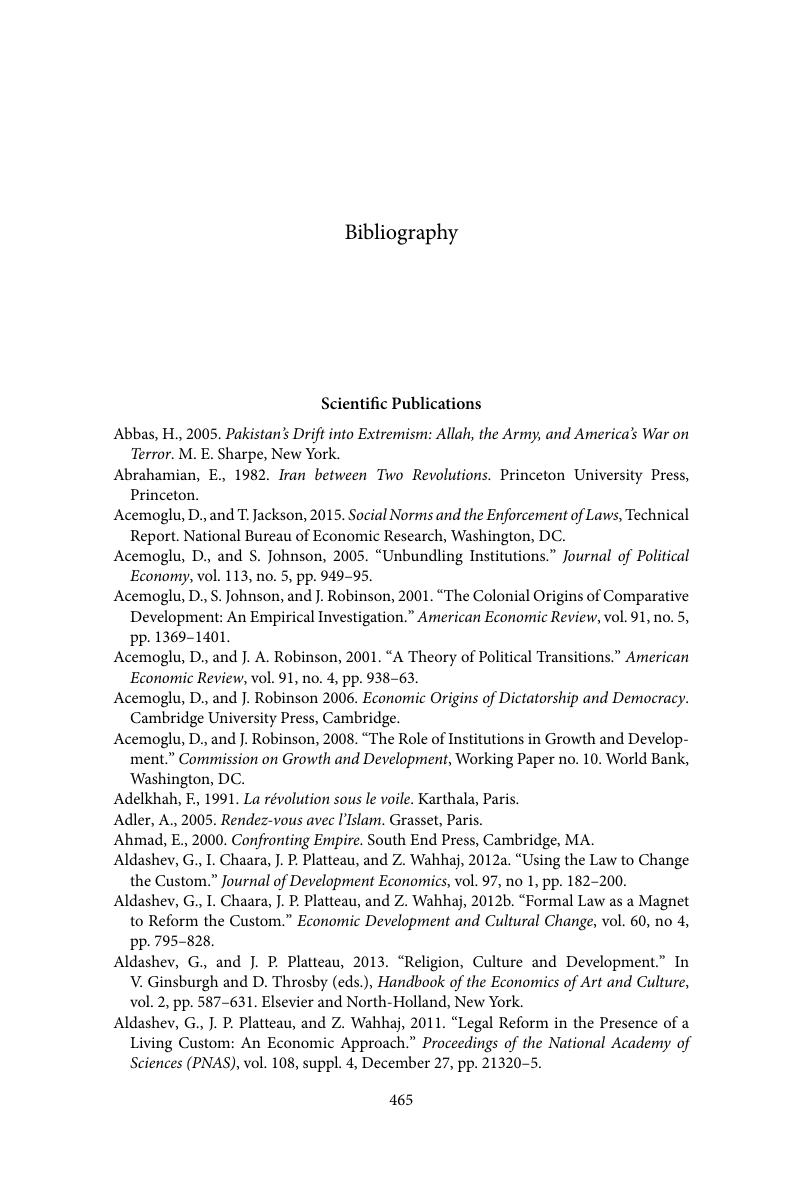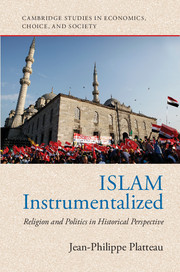Book contents
- Islam InstrumentalizedReligion and Politics in Historical Perspective
- Cambridge Studies in Economics, Choice, and Society
- Islam Instrumentalized
- Copyright page
- Dedication
- Contents
- Preface
- 1 Introduction
- 2 Insights from Early Modern Europe
- 3 Conflation between Religion and Politics
- 4 The Dominant System of Politico-Religious Relations in Islam
- 5 The Rise of Islam in Conditions of State Crisis
- 6 The Rise of Islam in Conditions of State Crisis
- 7 Islamism in Historical and International Perspective
- 8 Revivalist Movements in Other Religions
- 9 Enlightened Despotism Examined
- 10 Islam, Politics, and the Challenge of Enforcement
- Bibliography
- Index
- References
Bibliography
Published online by Cambridge University Press: 13 July 2017
- Islam InstrumentalizedReligion and Politics in Historical Perspective
- Cambridge Studies in Economics, Choice, and Society
- Islam Instrumentalized
- Copyright page
- Dedication
- Contents
- Preface
- 1 Introduction
- 2 Insights from Early Modern Europe
- 3 Conflation between Religion and Politics
- 4 The Dominant System of Politico-Religious Relations in Islam
- 5 The Rise of Islam in Conditions of State Crisis
- 6 The Rise of Islam in Conditions of State Crisis
- 7 Islamism in Historical and International Perspective
- 8 Revivalist Movements in Other Religions
- 9 Enlightened Despotism Examined
- 10 Islam, Politics, and the Challenge of Enforcement
- Bibliography
- Index
- References
Summary

- Type
- Chapter
- Information
- Islam InstrumentalizedReligion and Politics in Historical Perspective, pp. 465 - 496Publisher: Cambridge University PressPrint publication year: 2017



